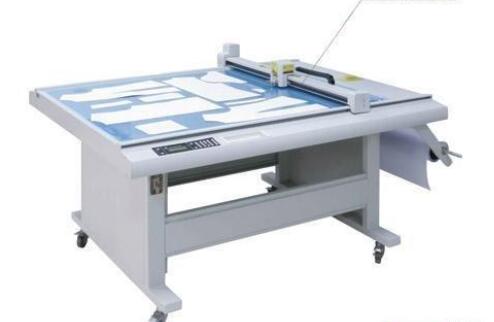In practice, a difference will be formed between the engraved profiles of the full and partial glazing types. Even glazing plates used for full-plate glazing have a carved cross section because the recessed portion at the edge must be deeper to keep the coated glazing oil there. The purpose of partial glazing is to enhance the contrast of gloss or matte gloss with the substrate or other page elements, or to emphasize them with a pigment effect. The vacant part of the full version of the glazing plate is mainly limited to the area to be glued (folded carton), stamped or stamped at a later time. When choosing a glazing plate, a key criterion is to avoid the maximum engraving depth required for varnish to accumulate on raised image elements. However, the deeper the recess, the more unstable the profile, especially for delicate, small elements. When using photosensitive resin plates, the delicate individual lines and dots are not a problem for glazing: because these elements are not as delicate as those in mesh tone flexo printing. The situation is different in the glazing plates made by cutting and peeling: vertical cutting can make more delicate elements unstable, they cannot bear any shear force, and are easily deformed or broken. So it is best to make sure that the sides are slightly angled, at least when hand-carving on the rubber. Cutting and peeling (lifting, detaching) are two processes. In these two processes, the varnished contour is cut out, and the area on the blanket or printing plate that is not varnished is removed manually or directly with a computer. The plate-making system and a cutting machine are removed. Essentially, any blanket can be cut and peeled and achieve some acceptable quality. For stripping, other key criteria are the ability of the fabric to accept and transmit varnish, and its swelling resistance relative to oil-based inks, different varnishes and detergents. The compressible layer in the rubber blanket plays a decisive role in peeling off: if the tight layer has to be cut, peeling off the cut part will be very difficult. However, the open cell structure makes stripping easy. If it can be cut onto a polyester or aluminum liner (which is usually the case on thin blankets), peeling will be easier. Some manufacturers suggest combining an incompressible glazing blanket that can be cut deep and a compressible liner. Other manufacturers use the compressible layer in the glazing blanket as the separation layer, from which the cut-out can be easily peeled off. There are tools for manual cutting and a heating plate to assist in stripping, but first you must copy the glazing image onto an opaque rubber fabric to create a template. The easiest way to accomplish this is to use a photosensitive diazo film placed on the rubber, so that the rubber can be exposed and developed like an analog printing plate made of transparent positive photo film. Those transparent films to be glued to the aluminum base plate should be mounted on the aluminum plate that has been imaged according to the glazing pattern. The cutting plotter is controlled with CAD data generated by, for example, package design software or contour data. But even so, you must manually remove the cut part. Some special blankets and printing plates that can be cut with a cutting and plotting machine are protected by a non-scratched or non-adhesive film. The film must be removed after cutting and drawing. As shown in Figure 6-36, STIGroup in Lauterbach (Germany) produces rubber varnishing plates for KBA Rapida 142: generates CAD data for folding cartons, inspects vacant parts on blank frame samples, and cuts on cutting plotter For the printing plate, peel off the mounting hole, peel off the rubber layer to expose the peeled glazing printing plate, install the printing plate and remove it after the stamping is completed. Hot reading: Editor in charge: Liu Yang In the ESD Access Control, the Anti-static digital display ESD tester is an important device to check from the source. Digital display ESD test host can detect whether the anti-static measures or equipment of each worker who enters the anti-static area is in place and qualified. That is to say, before the worker enters the work area, the Electro-Static discharge control system is used to confirm whether the worker can enter the work area, so as to avoid entering with a large amount of static electricity, which may cause product loss. Anti-Static Digital Display Esd Tester,Digital Display Esd Test Host,Electrostatic Discharge Control System,Esd Tester Guangdong Zecheng Intelligent Technology Co., Ltd , https://www.zechengsecuritys.com
